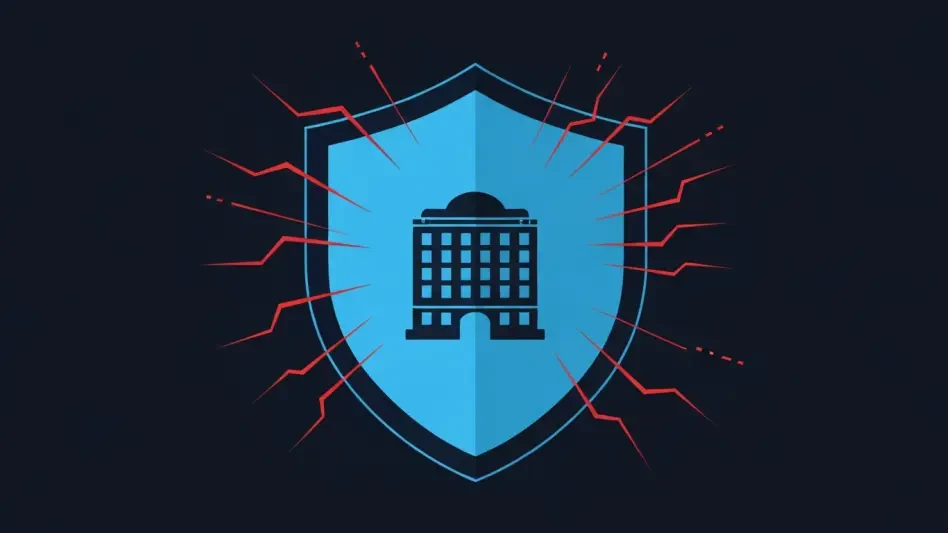In a landscape of increasing digital threats and sophisticated cyber activities, New Zealand’s approach to bolstering public sector cybersecurity represents a significant stride. The country’s commitment began with the National Cyber Security Centre’s introduction of ten Minimum Cyber Security Standards. This initiative stands as a cornerstone in safeguarding public sector agencies against evolving cyber risks by establishing a holistic set of expectations and protocols. The Government Chief Information Security Officer’s mandate is pivotal, ensuring these standards not only enhance security frameworks but also promote continuous improvement, visibility, and compliance through structured insights derived from agency reports.
Collaboration and Consultation Process
Synergizing Efforts with the Protective Security Requirements
The collaboration between the National Cyber Security Centre (NCSC) and the Protective Security Requirements (PSR) team showcases a concerted effort to streamline cybersecurity initiatives. By carefully coordinating consultation and publication timelines, they have fortified the approach to standardizing cyber defense across public agencies. The comprehensive consultation, which engaged GCISO-mandated agencies and industry partners, underscores the inclusive effort to tailor standards that reflect both expert opinions and practical considerations. This process commenced on June 16, culminating in a consensus that ended on July 4, allowing for a comprehensive exchange of insights, feedback, and proposals.
With the standards set to be enforced by October 30, agencies have been permitted a progressive period to align with baseline requirements. The extensive consultation facilitates an accurate gauging of whether these standards effectively meet expectations. Agencies will find these standards accessible on the NCSC’s website, ensuring that the specifications are comprehensible, transparent, and conducive to organizational planning and compliance. Feedback not only signifies whether the standards are sufficiently comprehensive and stringent but also aids in the fine-tuning of strategies for effective cybersecurity defense.
Analyzing Feedback to Inform Standards
Feedback from the consultation process is integral, shaping the final version of these standards, scheduled for release in October. The consultation’s outcome provides a deep examination of the proposed measures and assesses their viability within the operational frameworks of public sector entities. The feedback loop is invaluable in resolving ambiguities and adapting standards to suit realistic scenarios and anticipated threats. Agencies are required to demonstrate adherence to these newly implemented standards, with reports due in April 2026 as part of the Protective Security Requirements assurance process.
The iterative improvement ensured by feedback helps refine the parameters of each standard, encouraging robust cybersecurity that matches the maturity level needed. These standards, poised between the directives of the New Zealand Information Security Manual and the NCSC Cyber Security Framework, outline clear expectations. A maturity model is embedded within these standards, facilitating agencies in measuring organizational growth in cybersecurity. The baseline maturity set at Capability Maturity Model Level 2 signifies planned and manageable cybersecurity activities, setting clear benchmarks for agencies to scale their security protocols effectively.
Frameworks for Cyber Standards Implementation
Crafting Structured Cyber Defense Measures
The ten Minimum Cyber Security Standards pivot on enabling public sector organizations to strategically anticipate, navigate, and mitigate inherent security risks. By concentrating on core areas like security awareness and risk management, these standards pave the way for organizations to fortify their defenses comprehensively. Detailed guidelines spanning asset identification, secure software configuration, and least privilege application provide a roadmap for enhancing institutional security stature. Each standard acts as a building block, creating a robust barrier against potential security breaches while underscoring the necessity for constant vigilance.
To ensure comprehensive implementation, each standard is meticulously articulated to communicate its fundamental purpose, application, and expected outcomes. Embedding these standards into daily organizational operations necessitates an understanding of security nuances that empower agencies to continuously evolve their maturity levels. Effective implementation relies on navigating each of these security domains with precision, aligning strategic goals with cybersecurity objectives that protect both digital infrastructure and sensitive data.
Human Factors in Cybersecurity Defense
Recognizing human factors as pivotal components of cybersecurity reinforces the dual role they play as both assets and vulnerabilities. The standards emphasize a culture of security awareness, embedding it into the core fabric of organizational priorities. Ensuring all staff possess an understanding of secure practices and threats is crucial, requiring ongoing training, education, and guidance. Organizations are encouraged to develop training programs that encompass aspects of onboarding and continual learning, keeping pace with evolving cybersecurity landscapes.
Incorporating cybersecurity awareness from the onset of the employment process, organizations must provide structured resources that empower employees in handling information systems securely. Additionally, regular communication and feedback loops encourage the active participation of staff in identifying and reporting security anomalies or incidents. This participatory approach fosters an environment where secure practices are not only expected but actively supported and improved upon. Specialized training for specific roles acknowledges varying risk exposure and enhances targeted risk management.
Strategic Cybersecurity Culture
Establishing Comprehensive Cyber Policy Frameworks
An effective cybersecurity cultural shift within the public sector mandates clearly articulated policies, delineating acceptable and prohibited behaviors explicitly. These policies form the foundation of an organization’s cybersecurity practices, ensuring everyone adheres to a fixed standard of conduct. Regular assessments of compliance and clear, transparent communication strategies ensure that these policies are not only adhered to but actively contribute to the organization’s security objectives. Role-specific training ensures that all personnel understand the implications of their actions within a cybersecurity context, promoting adherence to sophisticated security measures.
Senior leadership endorsement is pivotal in sustaining effective security initiatives, emphasizing the establishment of comprehensive policies and procedures. Organizations should develop a thorough inventory of tools and resources available for managing cybersecurity threats, backed by leadership approval. By embedding cybersecurity as a core organizational value, agencies can ensure that both strategic choices and operational practices reflect a unified resolve to uphold a secure ecosystem.
Evaluating Security Maturity and Response Readiness
As digital threats and cyber activities grow more sophisticated, New Zealand has taken a proactive approach to strengthening cybersecurity within its public sector. A major step forward in this effort is the National Cyber Security Centre’s establishment of ten Minimum Cyber Security Standards. These standards are instrumental in protecting public sector agencies from the rising tide of cyber threats by creating a comprehensive set of guidelines and protocols. At the heart of this initiative is the Government Chief Information Security Officer, whose role is essential in ensuring these standards do not just enhance existing security frameworks but also foster ongoing improvement and compliance. This is achieved by providing structured insights drawn from agency reports to create a resilient cybersecurity posture. By promoting visibility and adaptation to new threats, these guidelines lay a strong foundation for New Zealand’s public sector to effectively mitigate evolving cyber risks and ensure the nation’s digital infrastructure remains secure and robust in an ever-evolving digital landscape.








